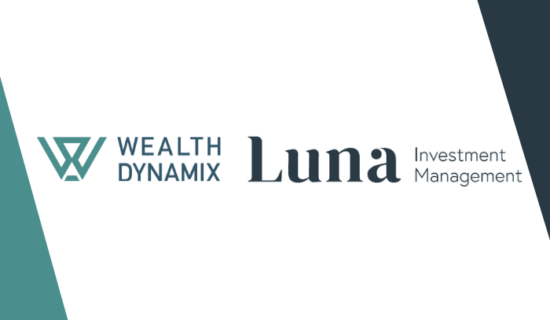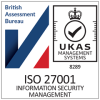On December 7, Hubbis hosted a virtual discussion focusing on the application and then implementation of the latest digital solutions in the world of Asian wealth management, as technology revolutionises the offerings and efficiencies of private bankers, EAMs, MFOs, SFOs and across the broad investment and advisory community in the region.
Darell Miller, Managing Director for APAC at Wealth Dynamix was one of the three experts on the panel and offered detailed insights and advice on the application of digital tools to help in many key areas of the wealth management offering, including, of course, related to Wealth Dynamix’s specialisation in Client Lifecycle Management (CLM). He explained why a central client orchestration layer is the key foundation for a private bank or wealth firm that wants to take advantage of digitisation and AI to grow their business and increase their profitability. He advised anyone considering such upgrades to understand their objectives and the technology, to ensure they assemble buy-in through the key decision makers and users internally, and then take a modular, step-by-step approach to implementing these new solutions. Hubbis has reconfigured Darell’s views into this Q&A, so as not to lose out on any of the details and subtleties of his messages.
Hubbis: Darell, can you offer some perspectives on the evolution of the wealth management markets in the region, and set the scene for the technology solutions and approaches you advise for customers such as private banks, EMAs, MFOs and other wealth management competitors?
Darell: A key driver of change is the speed and scale of wealth transition between the older, next and younger generations. Just within the Asia region, Accenture estimated the total being transferred within families will approach USD1.9 trillion.
That, in turn, means that this wealth already exists and is therefore going to either stay with certain banks and other providers or move to competitors, including new entrants. So, this represents both a great opportunity, but also, for the established incumbents, especially the banks, a considerable challenge, as they not only want to hold on to AUM, but also want to build their market share.
Wealth Dynamix has been looking at this and thinking about how competitors can be both building and defending at the same time. We come at this from the perspective of how banks and others can articulate the technology architecture that will enable them to do so. They need to be able to provide the right solutions at the right time and deliver them in the right medium; that way, they meet the needs and expectations of current clients, as well as address the new generation of clients coming through as they either inherit family wealth or create their own.
To achieve any or all of that, you need what we would call a consistent client orchestration layer, where all relevant client data is assembled. To do that, you need both a great database and data management protocols, and also specialisation in client relationship and lifecycle management; this makes sense of all the multifarious activities and relationships of a client, their needs and expectations, and then helps guide the banks and others to the types of products, advice and approaches they should promote and adopt.
In essence, what happens is that all the key data sources and strands are brought together, to drive a rapid origination and delivery of solutions via the RMs that are highly relevant and suitable for each client. Remember that trying to achieve these objectives without that underlying orchestration layer is going to be very difficult.
Hubbis: Having explained the thought process and the mission, how then should customers choose their solutions and then implement the digital transformation that will result in real advances for their firms, their teams and of course their clients?
Darell: First, they need to take a hard look at what kind of client database they have in place. Do they have a really good CRM and onboarding process that ties into that so that they can mine all the necessary efficiencies, and do so compliantly and potentially across multiple jurisdictions? Do they have something that really supports their whole digitisation journey with the right infrastructure and strategies? If you have that, does it need updating and upgrading? What flexibility can you incorporate to help future-proof your wealth offering?
We are increasingly seeing more and more clients now looking to actually do this via SaaS technology, rather than in-house software. And they don’t want it to be all custom-built; they want to be able to configure it themselves and make the changes so that they can adapt that infrastructure going forward. That is really important because you do not want to keep revisiting these issues, you need to be able to adjust and reconfigure that for yourselves, moving forward in tandem as your clients’ needs evolve.
But first look at the client database, look at your CRM, your onboarding, and the 360-degree view of data and clients for the RMs. Get that in place first. Then you can progress the machine learning, the AI, the intelligent transfer of the knowledge you have on clients to products, advice and a much more client-centric offering. If you do not have that foundation layer in place, you will however be building on sand; it might look wonderful at first, but it will be at risk of being washed away by the tide of events.
Hubbis: What can go wrong in the implementation of these technologies and solutions, and where do you see the mistakes being made?
Darell: Generally speaking, there are three key stumbling blocks. One is not appreciating that technology transformation needs the human element, not just in terms of internal usability, but in terms of buy-in from the decision-makers, understanding from the key users such as the RMs and advisors, and making sure that everyone is truly aligned behind all this. If you don’t have that, and it is purely about digital tools, they are waving a big red flag.
Secondly, go step by step rather than try to achieve all your objectives in one mission, the Big Bang, as we might call it. You need to prove the effectiveness throughout the implementation, achieve internal and client adoption, and build consensus around the objectives and their realisation. We therefore advise a modular and strategic approach.
Third, you need to fully understand what is vital in terms of the integration of these solutions. That sounds like an obvious statement, but it is crucial to understand how the steps need to come together and also what not to do along the route of implementing the solutions you have chosen.
I can offer an example of something we are doing with a private international bank in Singapore and Hong Kong. The way they are staffing and handling the project is a very good base for other people to consider. They have a senior RM, a senior operations person and a senior compliance person from both Singapore and Hong Kong, involved in the project on a weekly basis, and fully on top of objectives and progress. They show team members the outcomes step by step and build buy-in and understanding. In doing so they are able to implement the technology and ensure that they are aligning the different team members, front, middle and back, with the technology, the objectives and the solutions.
Hubbis: To conclude, what should delegates be taking away from this discussion today that will help them in these areas?
Darell: If you want to create a really good digital platform that showcases your unique proposition as a firm, we believe you must have access to that great fundamental layer of your client data. Your CRM database needs to be extremely good, very flexible, it should be modular, and agile for the support of your future needs and aspirations, so that you can deliver different types of products and services to different segments of customers at the right time in the right ways. Without that foundation, without a really good CRM platform that truly empowers and enables your RMs and advisors, you will struggle in the future.





